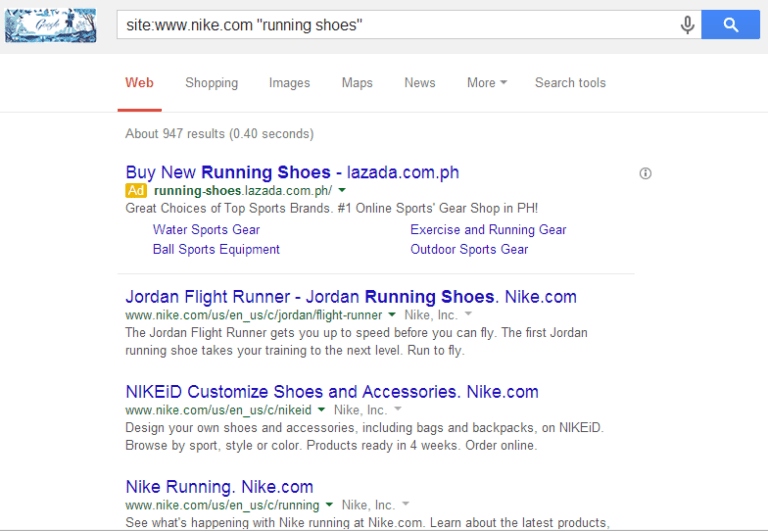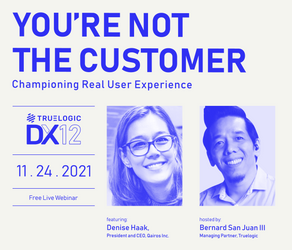A Guide to Lead Generation Strategies for 2022

There are only two ways to grow your business.
The first way is to expand the amount of business you are doing with current customers.
The second way is to win more clients – and we all know clients don’t come out of anywhere. You often have to exert effort to generate new leads.
Four Signs You Need Better Lead Generation
Has lead generation been a challenge for your business lately? Here are symptoms you need more help with within this area.
- Lack of sales appointments
You struggle to fill your sales appointment calendar. If you’re stuck at this stage, it’s time to hustle.
- Your lead conversion rates are low
You may be getting leads into initial meetings but discover they’re not quality leads. They probably will not qualify for a digital marketing services proposal from you, much less grant you an eventual sale.
There’s nothing wrong with this; your business and theirs are not a match.
But you have to keep looking.
- Your existing leads are going cold
You’ve invested a lot of time talking to clients, but you don’t seem to be making progress.
Although they have probably met or spoken with you a few times, they’ve become unresponsive to follow-up calls or emails.
Several of these prospects arrived all the way to the proposal stage, but aren’t signing the contract.
- Traditional, in-person lead generation is not yet an option for everyone
The 2020-2021 pandemic changed lead generation strategies for many businesses, especially in the B2B sector.
Many are still not back to face-to-face networking activities and in-person business meetings. Many still choose not to join or attend trade shows and events, and still tend to avoid air travel to meet with prospects.
So how do you keep your pipeline active?
If new leads in this New Normal aren’t coming to you, then you must find ways to attract them.
Offline lead generation strategies are far from dead, but events such as the COVID-19 pandemic have changed the way companies are trying to grow their business.
The future of your lead generation strategy is likely to be a hybrid of online and offline tactics. Mastering digital marketing techniques matters more than ever, even if you eventually meet your prospect in person to sign the deal.
Meet and Master Online Lead Generation
Online lead generation strategies are redefining how businesses designate and target potential customers.
With so many Internet channels at their disposal, B2Bs and B2Cs are activating new digital campaigns to capture these audiences online.
Companies are also discovering it is possible to save lots of money trying to capture leads via the Internet, and are rethinking the traditional methods they’ve used so far.
If you’re a startup – or even if you aren’t – putting in place an efficient lead generation system is one of your highest priorities.
What is a Good Online Lead?
Let’s review a few things.
What is a lead?
A lead is someone who expresses interest in your products and services. They can come from anywhere and be of any age or any demographic.
When does someone turn into a good online lead?
In the digital sphere, someone whom you’re talking to turns into a lead when they’ve taken an online action signifying interest in your product. They willingly exchange information that tells you they’re interested in having a business conversation.
Here are some examples of online customer actions that signal potential interest:
- Clicking on an ad that takes them to a landing page, where they fill up and submit a form with their information;
- Subscribing to a newsletter in order to receive news updates and offers;
- Sending you an email, inquiring how to speak to you or get more information;
- Messaging you through any of your social media channels, asking for a meeting or a quotation on your products and services.
A Good Lead is a Nurtured Lead
Offline or online, everyone knows that an interested customer will very rarely sign up for your product or service after just one interaction.
You can get in touch with a b2b online marketing agency to maintain visibility and contact with that client, but be ready to speak to them multiple times to negotiate a contract, especially if you are a B2B.
Not that you didn’t already know, but if you want statistical evidence, Marketing Sherpa found that 73 percent of B2B leads are not ready to buy when you meet.
Furthermore, a lead generation study by Marketo finds that companies can generate up to 50 percent more sales at 33 percent less cost if they are able to nurture the customer into a sale.
Identify Your Customer’s Level of Interest
The critical process behind lead generation is divided into three general stages: attracting, nurturing, and converting prospective buyers.
Although no one customer is the same, every customer journey is understood as a series of movements through a marketing funnel.
Attracting a lead entails creating awareness of your product and generating interest. A customer who is at this stage will be at the top of the marketing funnel (TOFU).
Go back to what we discussed earlier. Does the person you’re talking to show interest in your product and want to know more?
Your objectives with customers at the TOFU stage are to build awareness and interest and grow trust on the part of the customer, so they will engage with you.
Nurturing the lead requires you to explain the virtues of your product. An interested customer has to be nurtured with information that can guide their decision.
Nurturing a customer who is in the middle of the funnel can be a lengthy process. You will need to provide as much info as the customer needs or asks for, such as:
- What does your product or service consist of?
- How does it solve my problem or situation?
- How should I use it effectively to solve my problem?
In short, a customer who is being nurtured is moving from top of the funnel (TOFU) awareness to the middle of the funnel (MOFU). This customer now realizes they are looking at a product or service that can solve their needs.
Converting the lead is the final stage. A customer that you have brought to the conversion stage goes through two processes: consideration and evaluation.
This customer is moving toward the bottom of the funnel (BOFU).
You may have already submitted a proposal outlining prices, project timelines and milestones, and a basic execution plan, but the customer could still be unready to decide.
Engaging with a customer in the BOFU stage can be a lengthy process, because you may have to bring the customer back to the nurturing stage (provide them with more info, help them consider their options).
A customer at this stage assesses everything you’ve told them and has a set of criteria to help them decide whether or not to buy.
They could be doing some additional research of their own and comparing your product with others.
Follow the Process
Understanding how your customers pass through each stage of this journey is critical toward improving your customer interactions with subsequent leads. It can teach you to finetune, customize, personalize, and hopefully shorten the process from start to closing.
Turning leads into interested prospects, and interested prospects into buying customers is a skill and a process.
Depending on your product, your targeted audiences, and your skills, there are many digital strategies and tactics you can use to generate leads successfully.
Generating Leads The Classic Way
Leads can come from anywhere. Offline, these are your most valuable sources:
Client Referrals
Clients past and present can bring in some of the best lead referrals, for two reasons: (1) they know how you work and what you are capable of, and (2) they like what you have done for them enough to recommend you.
A lead from a referral may not know much about you, but is going by your reputation.
Competitors
A lead who came from a competitor is a big opportunity. This client may have been dissatisfied with services rendered by your competitor or decided their service was too expensive to maintain. Either way, the ball is in your court.
Lead Lists
These are large, compiled directory lists of names and contacts that are sold to companies to generate business. The challenge with lead lists like these is sending cold emails or making cold phone calls to people who didn’t even know you existed. Your chances at success are low. In fact, buying lead lists is largely a waste of your time and money.
Online Lead Generation Platforms
Generating online leads online is one of your most critical activities as a digital marketer.
At the core of your online lead generation efforts is Content Creation, and the outcome of your online lead generation strategy is the Channel Strategy you use to disseminate your content.
Content that explains who you are, what you do, and what you can do for the customer who approaches you. You can create smart, well-researched documents to attract leads, and long-form content and social media to nurture customers. Don’t forget audio content such as podcasting, which is increasingly popular, as well as live (as in live webinar) or recorded content.
The Channels you need to use are these:
Your Website
Your website is your best calling card. When built and designed well, it explains your business services and your unique selling propositions.
It highlights some of the work you’ve done, whether in the form of case studies, blogs, or testimonials.
And it can direct visitors to your website to leave their information so that you can contact them. With that being said it is important that you have a functional and responsive website, and to ensure this make sure that you’re working with a professional web design agency.
Search Engine Optimization (SEO)
Search engine optimization is a set of strategies and tactics that enable you and your brand to become more easily found on Google and other search engines. It revolves around creating lead generating content that is highly rankable, ideally, on the first page of Google.
It also entails optimizing your company website for mobile friendliness and web core vitals. Keyword research is an important driver of your content and SEO strategy.
If you aren’t using this keyword research to launch a series of ads, it can be applied to organic content that you’ve created on properties where your brand is present. This usually refers to your website, but can be applied to content on social media, as well as video content you place on channels such as YouTube, Instagram, or Tiktok.
Email Marketing
Email marketing – or direct marketing, as it used to be called – is still at generating engagement from subscribers and driving lead generation.
Because email marketing lets you segment and personalize your communications, it is amongst the most reliable digital marketing formats for lead generation.
Compared to other lead generation channels, you have a good chance of capturing the attention of a cold lead in outreach campaigns.
Paid Media
Paid media advertising is still the fastest and most direct way of generating leads for your audiences.
There’s classic paid media marketing in the form of text-based Search Ads and Display ads.
You can also tap mobile as a lead generation tool via Google Discovery, which can be placed in Gmail’s Promotions and Social tabs, the Home section and Watch Next feeds on a YouTube channel, as well as Google’s very own Discover app.
Understanding how each of these products works in Google Ads’ ecosystem can help you finetune your target audiences and messaging.
Display and Google Discovery are great at top-funnel campaigns, while “classic” Search Ads can do better with mid-funnel and bottom-funnel type campaigns.
Don’t forget that there’s also Google Video as an important. If you’re strong at video content strategy and creation, take advantage of the greater attention Internet users are giving to video content.
Whether it’s a 6-second bumper ad or a long-form ad, Google Video is an important platform for helping you generate leads, especially if your business is highly technical and needs more visuals to convey the nature or sophistication of your business.
Choosing Your Lead Generation Mix
Determining your lead generation strategy is essential to pushing your growth strategy forward.
If you are good at motivating prospects and nurturing them with content, you can still combine traditional outbound efforts such as calls and emails.
Digital marketing is great at inbound efforts – drawing leads toward you, leads who are probably already in search of a solution, somewhat familiar with your services, and ready to start a conversation.









